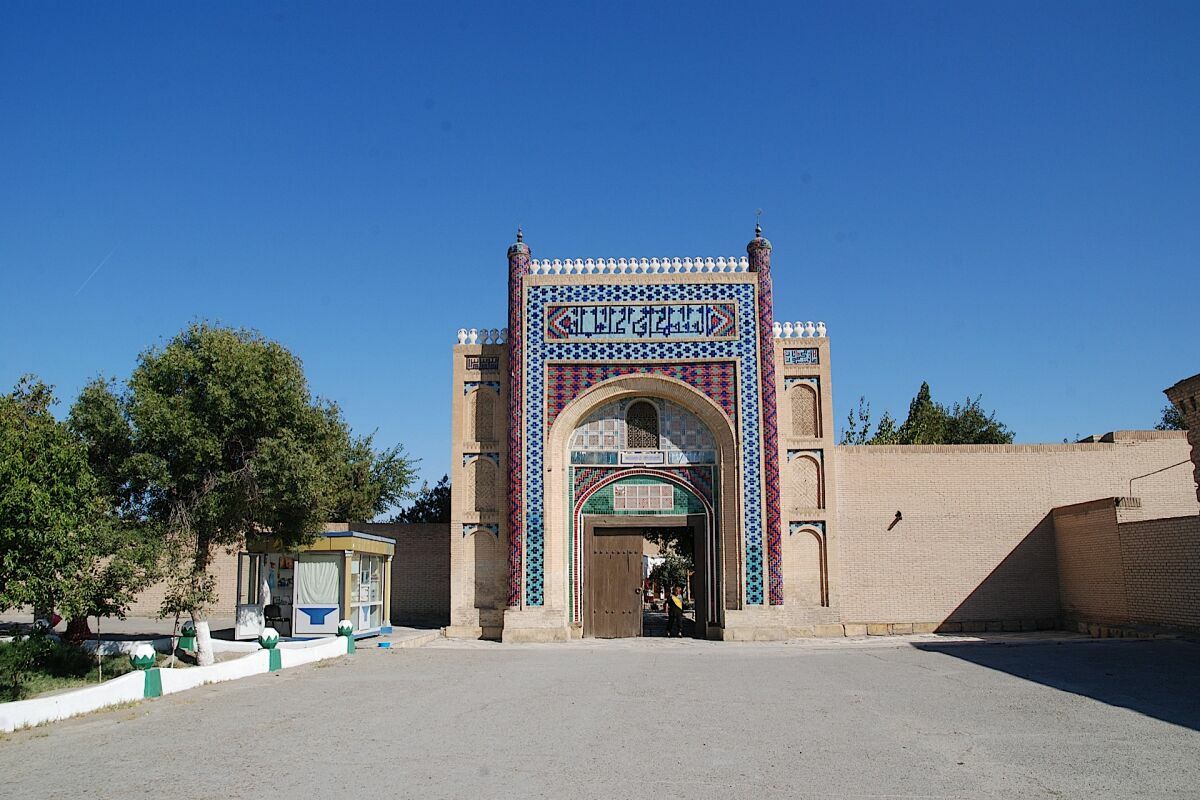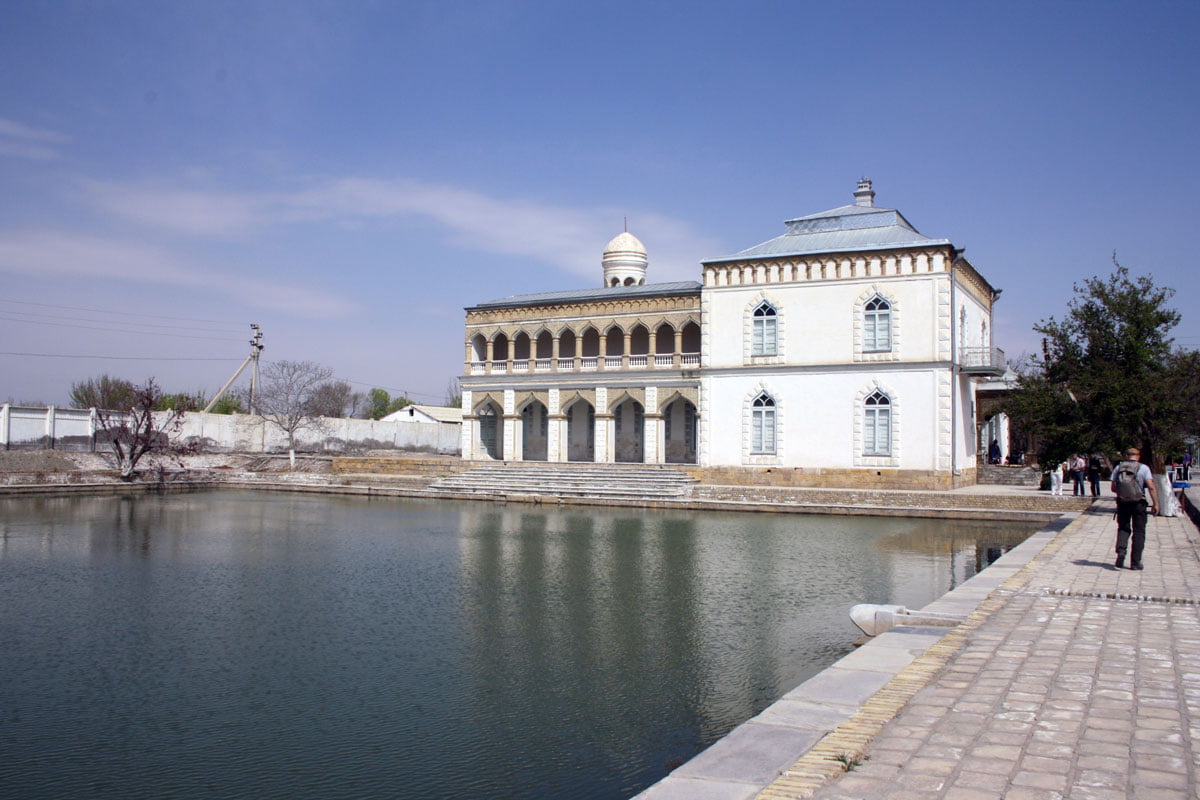Bukhara - Sitorai Mokhi Khosa

The Summer Palace Sitorai Mokhi-Khosa in Bukhara: an architectural Jewel
The summer palace of the Emir Sitorai Mokhi-Khosa in Bukhara (from the Persian: ‘House of the Moon and the Stars’) is located around four kilometres north of Bukhara and is considered an outstanding example of the synthesis of European and Central Asian architecture. The history of the palace reflects the cultural diversity and architectural wealth that have characterised Bukhara over the centuries.
The creation of the palace
Construction of the palace began in the late 19th century under Emir Abdullahad Khan, who was keen to build a summer residence that embodied both the splendour of the emirate and the influence of European architecture. To this end, he sent the best craftsmen in his empire to St. Petersburg and Yalta to study the architecture of Russian architects. In 1890, local architects under the direction of Usto Hodja Hafiz built the first palace, which laid the foundation for today’s ensemble.
Palace buildings already existed on this site under the emirs Nasrullah and Muzaffar, but the large-scale construction work that brought the palace to its current splendour only began under Emir Abdullahad Khan. His son, Emir Alim Khan, continued the work and added numerous new buildings to the complex.
Architectural features
The architecture of the palace complex combines European influences with the sumptuous decorative art of the palaces of Isfahan and centuries-old local traditions. The triumphal arch of the entrance gate, which is decorated with ornate mosaics, is particularly striking. Galleries with straight lines enclose the courtyard, while the European-inspired section of the palace is characterised by a greenhouse in front of a large water basin, which was built between 1917 and 1918.
In the centre of the garden are the rooms of the harem, which are characterised by their intimate atmosphere. The main part of the palace comprises several state rooms and the emir’s private apartments.
The White Hall is considered the masterpiece of the palace. Its construction lasted from 1912 to 1914 and bears witness to exceptional craftsmanship. Here you will find intricate stucco work, skilfully carved wooden ceilings and elegant mirror decorations that bathe the room in a magical light.
Cultural fusion and masterly craftsmanship
A team of 25 to 30 skilled craftsmen, led by the legendary artisan Usto Shirin Muradov, completed the opulent decoration of the palace. Muradov was particularly responsible for the gulganch work – ornately carved plaster that adorns the walls and ceilings of the palace and bathes the entire ensemble in an artistic interplay of light and shadow.
The interior design is characterised by exquisite details: Dutch tiled stoves, coloured glass and mirrors were specially supplied by Russian factories. The impressive marble lions at the entrance to the palace were made by the famous craftsmen from Nurata, who also designed the marble overflows for the houses in the shape of a dragon’s mouth.
Use and significance of the palace
Under Amir Alim Khan, the new palace complex Sitorai Mokhi-Khosa was built, which was mainly used to house Russian officials. The local rulers and sovereigns of Bukhara, however, continued to be received in the old palace. Next to the new palace were the barracks of Amir Alim Khan’s personal guard, an electricity plant, rooms for privileged officials and servants, workshops and other household buildings.
The new buildings were designed by the engineer Margulis, who brought a clear structure and functional elegance to the ensemble.
Preservation and current significance

The Summer Palace Sitorai Mokhi-Khosa in Bukhara reflects the fusion of different cultures and eras in its architectural design and artistic decoration. Today, the palace serves as a museum that brings visitors closer to the splendour of bygone times and preserves the rich history of Bukhara.
The Sitorai Mokhi-Khosa Palace is not only an impressive architectural masterpiece, but also a living testimony to the splendour and cultural wealth of the Emirate of Bukhara. Its ornate façades, magnificent rooms and the deep symbolism in every architectural decision make it one of the most important historical monuments in Central Asia.
